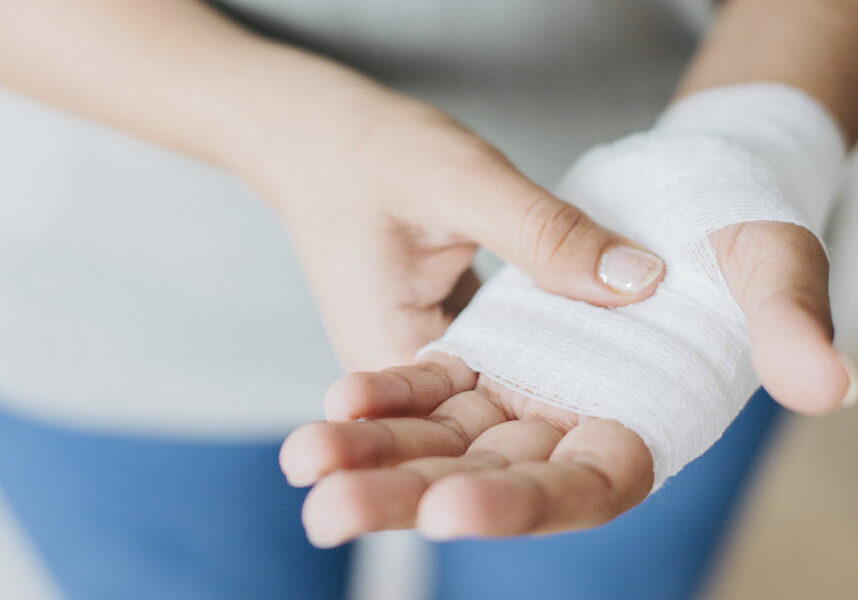Tips for Getting Prepared for hand therapy as a new grad or a Level II Fieldwork Everything you need to know in hand therapy starts with the upper extremity anatomy. Here is a quick checklist to review and hopefully help get you started in your new hand therapy setting.
By: Tristany Hightower

I suggest, as a new grad or student, reviewing the following.
Anatomy – Everything you need to know in hand therapy starts with the upper extremity anatomy.
- Review muscles by action (shoulder flexion, elbow extension, wrist flexion, etc).
- Review brachial plexus and innervations of muscles of UE
- Wound Healing/Bone Healing
- Timeline of healing
Billing
Billing may be specific to your sight and the business model, but knowing a few of these billing items can be helpful.
Review what items can be billed for under each category:
- Therapeutic exercise
- Therapeutic activity
- Self-Care
- Neuromuscular Re-Education
- Manual Therapy
Common Upper Extremity Conditions
Understanding the anatomy behind non-complex UE conditions is very helpful
- Trigger finger
- Carpal Tunnel
- Cubital Tunnel
- Distal Radius Fracture
Standardized Assessments to Review
Students need to know standardized assessments and know how to do them correctly. We have included some of the most popular ones we use in the clinic.
- Grip/Pinch Strength
- ROM using goniometer
- Monofilament testing

Special Tests
- Have a resource of special tests for the shoulder, elbow, wrist, and hand to have a point of reference for working in the clinic
- It is not necessary to memorize the special tests, but have the resource easily accessible for when an initial evaluation might have needed a special test.
Studying outside of Clinic
- Review patients who you are seeing the following day to get an idea of the diagnoses that you will be seeing
- Review the diagnosis to understand the anatomy.
- Consider having a list of exercises/activities that each patient does based on the diagnosis category
- Create treatment plans to review with the clinical instructor or supervisor each morning
Biggest Tips
- Have resources easily accessible to reference as necessary. Therapy for hand therapy and the upper extremity is very complex and requires consistent learning. I had to be okay with not knowing the answers to every question, but I always have the resources to answer the questions my CI asked with assistance.
Helpful Resources
- The ASHT Manual for Clinical Educators (free)
- ASHT Student Workbook (free)
- Rehabilitation of the Hand (found 6th edition online for free)
- The Hand: Examination and Diagnosis 3rd Edition (found a used edition for 10 dollars)
In summary, being a student or new grad in the field of hand therapy can bring many challenges, but the effort in learning and understanding can be very rewarding. It is a field that requires lifelong learning, which brings much fullfillment to one’s career.
More To Read
Got Wounds? How to manage them as a Hand Therapist.
Wound care is messy. It can be intimidating and scary with so many variations of wounds (for example, white skin around wounds) and so many products out there, it is hard to know what to use, when to use it, and how to use it. If you go to a wound care conference, you’ll spend most of…
Read MoreA Hand Therapist’s Role in Nutrition Education for Wound Healing
By Brittany Day Role of nutrition in wound healing Nutrition plays an important function in the biological factors that contribute to normal wound healing (wound care nutrition). Patients without nutrient dense diets may experience diminished cell production, collagen synthesis, and wound contraction. There is sparse scientific evidence that explores the exact science behind nutrition and…
Read MoreOccupational and Physical Therapy Continuing Education: Evidence‑Based Practice and Research Literacy
Introduction: The Role of Research in Modern Occupational and Physical Therapy In today’s healthcare landscape, staying updated isn’t a luxury—it’s a necessity. As new research floods academic journals and treatment methodologies evolve, therapists must stay ahead. This is where occupational and physical therapy continuing education comes in. More specifically, courses that emphasize evidence-based practice (EBP)…
Read MoreSign-up to Get Updates Straight to Your Inbox!
Sign up with us and we will send you regular blog posts on everything hand therapy, notices every time we upload new videos and tutorials, along with handout, protocols, and other useful information.




